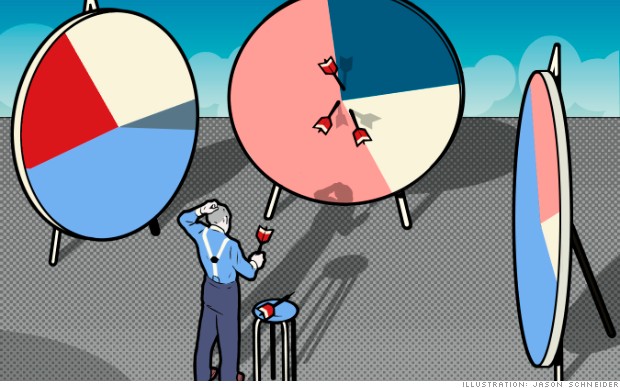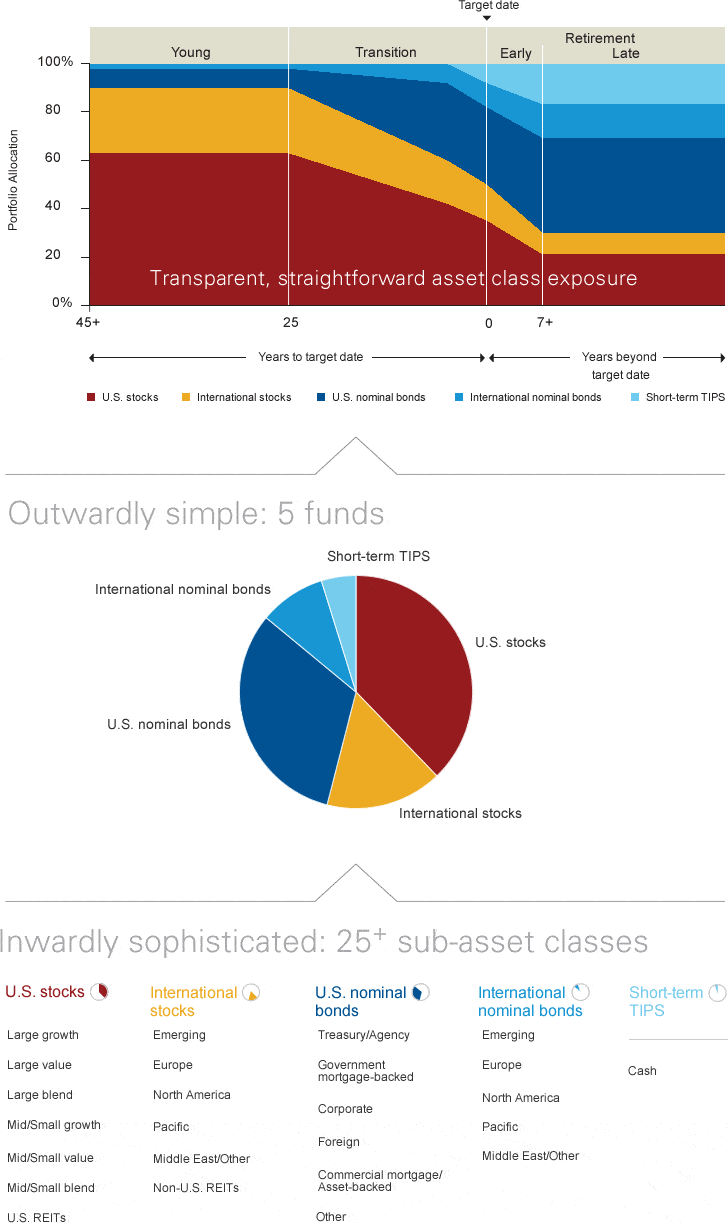 Target Funds aka Target Retirement Funds or Target Date Funds are slowly becoming the most popular retirement fund, and soon most 401(k)’s will be full of them. Pensions no longer dominate retirement talk and target funds are the latest hot item to hit the market. If you’re signed up through your employers 401(k) plan then most likely you’ve selected at least one Target Fund, and you might of not even known. In Moringstar alone there are over 2000 available and they have consumed about 13% of all 401(k) funds.
Target Funds aka Target Retirement Funds or Target Date Funds are slowly becoming the most popular retirement fund, and soon most 401(k)’s will be full of them. Pensions no longer dominate retirement talk and target funds are the latest hot item to hit the market. If you’re signed up through your employers 401(k) plan then most likely you’ve selected at least one Target Fund, and you might of not even known. In Moringstar alone there are over 2000 available and they have consumed about 13% of all 401(k) funds.
What are Target Funds?
The selling point of Target Funds is that the hard point of saving for retirement is taken out of your hands and put into another’s. The Target Fund is aggressive when you’re younger and conservative as you get older and closer to your retirement goal. An aggressive portfolio would have a majority in stocks and less in bonds; reverse that for less risk. In the INFOgraphic below you’ll see how as time passes it goes from aggressive to conservative investments. You’ll also see where your money is going and what it’s invested in.
infographic provdied by https://institutional.vanguard.com/VGApp/iip/site/institutional/marketing?file=TargetRetirementFunds
How they make you money?
Target Funds use compounding interest to make money. ‘What is compounding interest?’ you might be asking yourself.
This example helped me wrap my brain around it.
First year you invest $1200 ($100 month) x 7% = $84 in interest for a total of $1284
Second year you have already invested $1284 (1st yr) + $1200 (2nd yr) x 7% = $173.88 for a total of $2657.88; when you only put in $2400.
Follow this for 30 years and you’ll have $121,287
If you’d like a more detailed explanation read my article on compounding interest over at Fearless Men
Costs and Fees
Target Funds have come under fire for being less secure than pensions or having high costs associated with them. Only as recent as 2012 did it become a law that brokerages are required to reveal to all participants the cost and fees associated with it. Before that most participants had no idea and some Target Funds were outrageously expensive.
It is true that you need to read the fine print and know how much the costs and fees are. But it is not true that all of them have ridiculous price tags.
For example:
According to Vanguard’s website, “Vanguard Target Retirement Funds average expense ratio 0.17%, industry average of comparable target-date funds 0.64% as of December 31, 2012.”
I don’t work for Vanguard, but my employer does use them for our 401(k). I wonder if this low cost has something to do with it.
Pro’s
- Simplified – Target Funds try to take a complicated process – saving for 30 years – by making it simpler for us all to understand
- One Size Fits All – For most of us that want to set a target date of 30 years and let someone else manage it and re-balance it, this method works.
- Re-balancing – Target Funds take the responsibility of this out of the investors hands and into the asset manager. Knowing which stock or bond to pick, and then tracking each one daily, weekly or monthly is an impossible task for most of us.
Con’s
- Not Magic – Target Funds are simpler but you still need to be responsible for your own retirement by knowing what they’re invested in and the management costs associated with it.
- One Size Fits All – Not all of us are in the same boat and it can be difficult to know if you’re not in it. Each of our current situation, risk tolerance, other assets and retirement needs are different. More research and homework might be required on your part.
- Isn’t Re-balanced enough – Sometimes it takes years before a fund is re-balanced. Look into this and research what is purchased inside that Target Fund.
The Bottom Line
It’s your hard earned money so don’t let someone tell you what to do. Do some research into your options and what plans are available. Most employers offer a 401(k) match to a certain percentage. I hear on average an employer match of 50% up to your 6% is a good deal.
Target Funds have become popular because they work if used for their intended purpose. You’ll definitely make more through them then by leaving your savings in a box under your floor boards. You might make less than investing on your own if you know what you’re doing. This is the best option offered right in the middle for most us. I use a Target Fund for part of my portfolio in both my 401(k) and Roth IRA.
Editor’s Note: John is not a registered financial advisor and writes from his personal experience through reading, studying and managing his own finances. All of our financial situations are different and this is just a basic introduction for your own personal knowledge.









